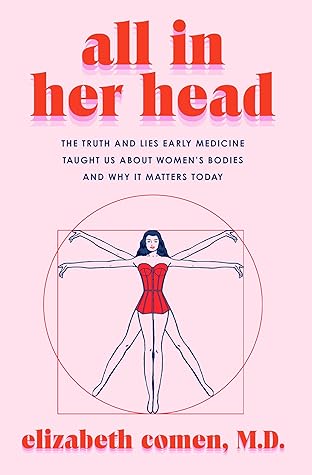More on this book
Community
Kindle Notes & Highlights
Started reading
June 8, 2024
Doctors can forget that our patients have lives beyond the confines of their appointment, lives in which how they look on the outside matters much more, day to day, than how healthy they are under the skin. Indeed, that complex interplay between beauty and health can make the difference between a patient who is living, versus merely surviving.
I came to understand that cosmetic interventions were where we could get to know patients as people, not just a collection of malfunctioning body parts in need of fixing. The boutique at the institute, where patients were fitted for wigs and breast prostheses, did not do anything to treat the cancer itself—but these interventions, far more than radiation or chemotherapy, made women feel whole again.
As far as we may have come from the days when doctors referred to amputated breasts as “useless appendages,” the legacy of those days rears its ugly head every time we dismiss a patient as vain for caring about how she looks.
Even now, the treatments we do have that can help prevent hair loss in some chemotherapy patients may be overlooked by physicians—or seen as valueless by insurance companies who refuse to cover them.
As much as I have sought to understand cancer itself at the most microscopic level, I remind myself every day: the insidiousness of this disease is not in how deadly it is, but how it destroys a woman’s life, her sense of self—externally, internally, and everywhere in between. For some patients, the biggest milestone in their treatment is not a clean scan, a successful surgery; it’s when they wake up to find that their hair, eyebrows, and eyelashes are finally growing back. It’s when they finish getting nipple tattoos on their reconstructed breasts. It’s when they look in the mirror and see
...more
The fact that a person can have cosmetic surgery to improve these things does nothing to solve the moral conundrum of whether she should, especially as the social consensus is so often that she shouldn’t—that there’s something gauche about buying beauty, or buying it back when it begins to fade. Even as our society fetishizes youth, or the appearance of youthfulness, to acknowledge this too openly—to let it show on your face in the form of having had obvious work done—is still, somehow, a bridge too far. Women, we are told, should age gracefully. And yet the notion of aging gracefully requires
...more
After all this time, we remain caught up in the same questions of legitimacy that plagued aesthetic medicine in its infancy: When is it right to intervene? The surface of the body doesn’t just protect us from the world; it’s the intermediary through which we experience it, and through which the world experiences us. Some people are born beautiful and welcomed with open arms; some are less fortunate, and are received with less forgiveness. If a doctor could turn someone from the latter category into the former—if the patient herself knocks on the cosmetic surgeon’s door to request as much—who
...more
All of this is complicated by the fact that cosmetic surgeries are often empowering to the women who choose them, quite literally endowing them with greater influence than if they’d left their faces untouched, unattractive, or aged. A bad facelift might be embarrassing, but a good one buys you something immeasurable: a few more years of being seen, in a world where women of a certain age tend to become invisible.
Simran’s story has a happy ending: her breast surgeon ultimately gave her the flat aesthetic closure she wanted, and the result was so successful that she often gets calls from other patients who are considering forgoing implants in favor of flat reconstruction. But what makes this story remarkable is how it fits into the evolution of plastic surgery as not just a medical field but a form of female empowerment, culminating in a moment where the patient not only chooses exactly what she wants to look like but chooses to step outside conventional notions of beauty, of desirability, of where her
...more


